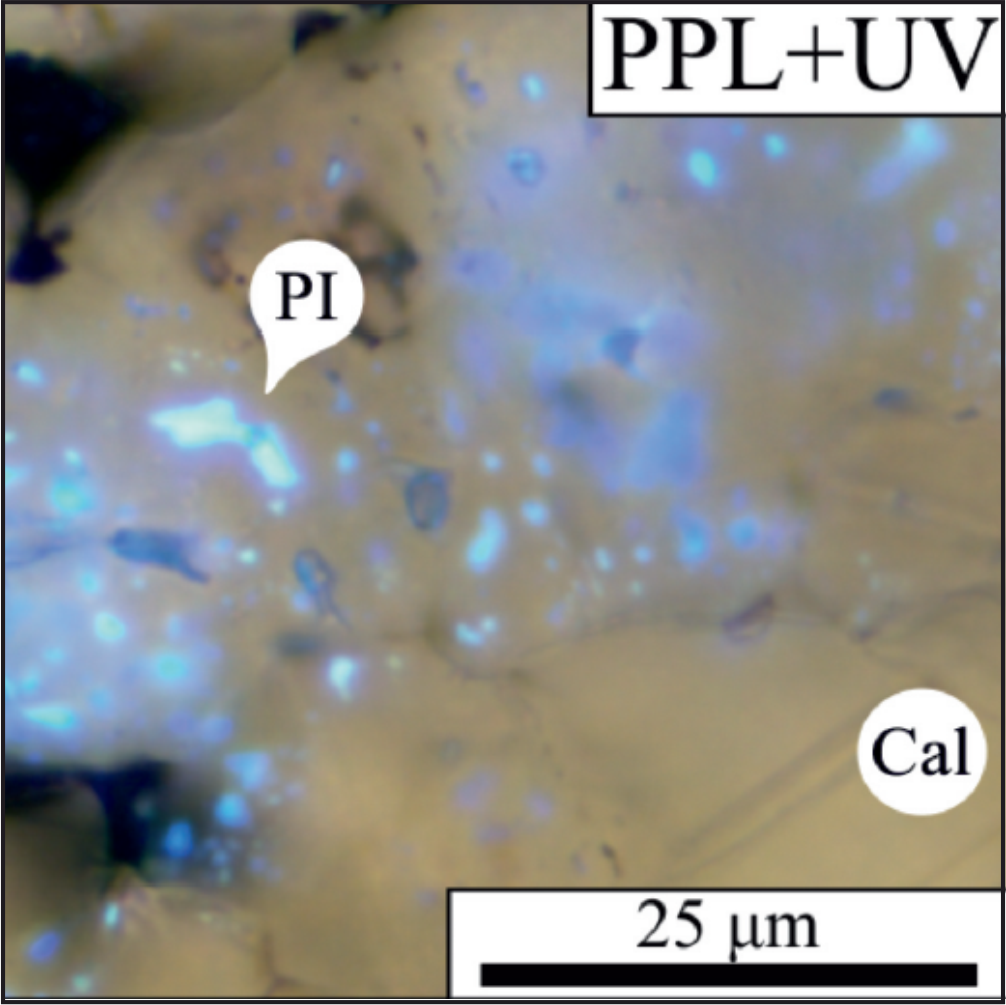Indication of hydrocarbon migration in the Western Mecsek Mountains evidenced by fluid inclusion chemostratigraphy
Abstract
Primary and secondary hydrocarbon-bearing fluid inclusion (HCFI) assemblages occur in the Middle Triassic Lapis Limestone in the Szuadó Valley of the Western Mecsek Mts. The primary HCFIs were trapped in saddle dolomite crystals, and the secondary HCFIs were enclosed in calcite neospar and fracture-filling calcite. Solid bitumen is also present along fractures. The volatile compounds liberated from fluid inclusions are characterized by non-hydrocarbon and hydrocarbon species. The fluorescent properties of HCFIs, the occurrence of the solid bitumen, as well as the composition of inclusion oils indicate the migration of light oils through the Lapis Limestone. Petrographic observations suggest a prolonged oil charge event, which resulted in HCFIs beeing trapped under evolving diagenetic conditions.
















